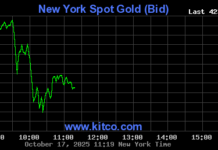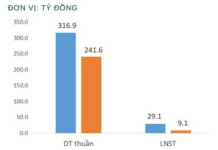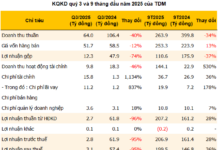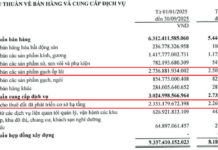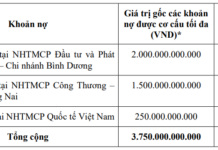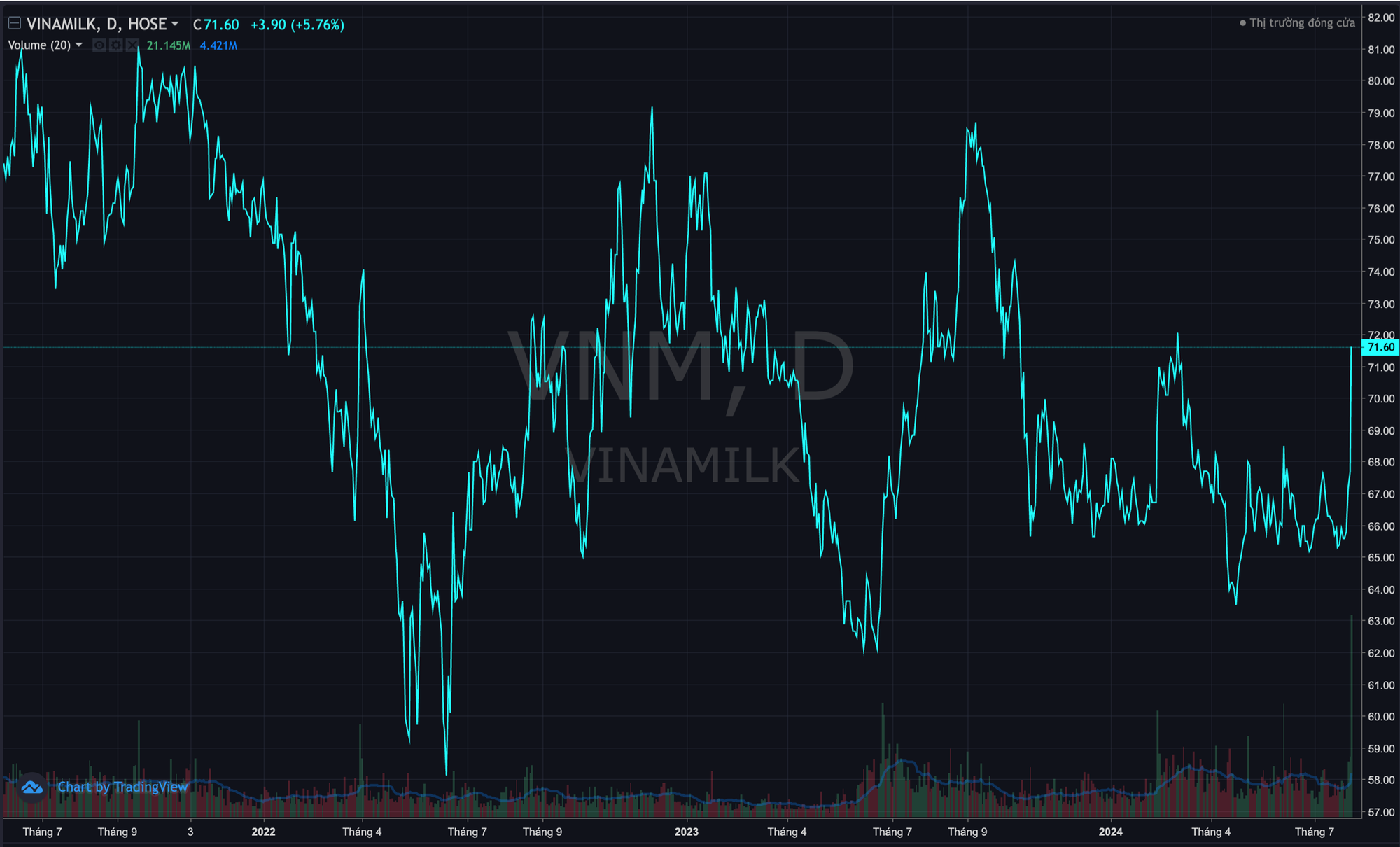On October 18, the State Bank of Vietnam posted the central exchange rate at 24,213 VND/USD, a 14-dong increase from October 17. Consequently, the ceiling and floor rates were set at 25,423 VND/USD and 23,000 VND/USD, respectively.
Throughout the week of October 14–18, the State Bank made significant upward adjustments to the exchange rate, resulting in a 52-dong increase per USD by the week’s end compared to the rate on October 14.
Commercial bank exchange rates rose by approximately 380 dong during the same week.
On October 18, commercial banks also made substantial increases to their exchange rates compared to the previous day.
Vietcombank’s buying and selling rates were 25,010–25,240 VND/USD, a 30-dong rise for both sides compared to October 17.
HSBC increased its buying rate by 209 dong, trading at 25,082 VND/USD, and its selling rate by 211 dong, reaching 25,308 VND/USD, relative to the previous day.
Eximbank, Sacombank, and Techcombank all listed their selling rate at 25,420 VND/USD.
During the week of October 14–18, commercial bank exchange rates climbed by approximately 380 dong.
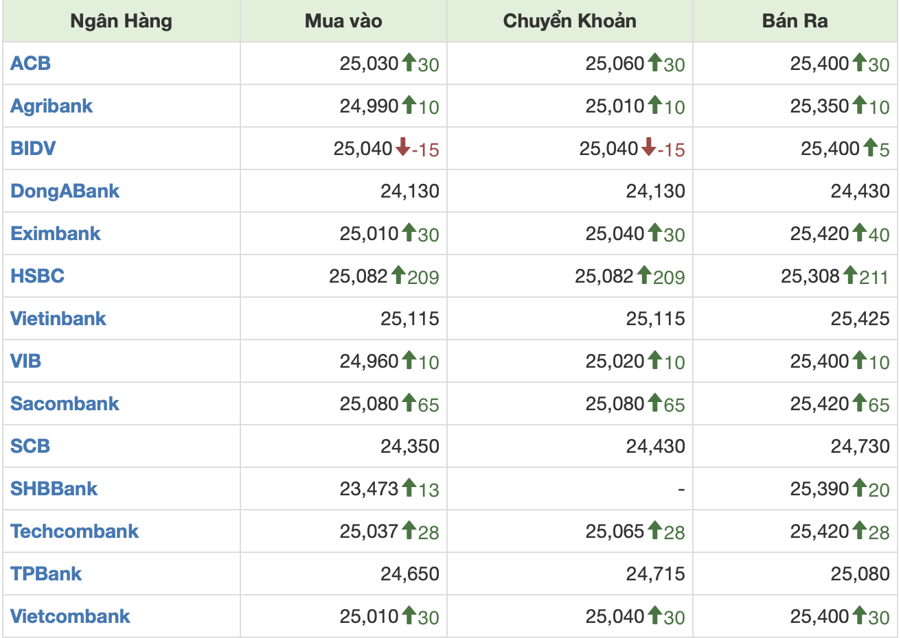
At foreign currency exchange points in Hanoi, the buying and selling rates for USD on October 18 were listed at 25,260–25,360 VND/USD, remaining unchanged since October 16.
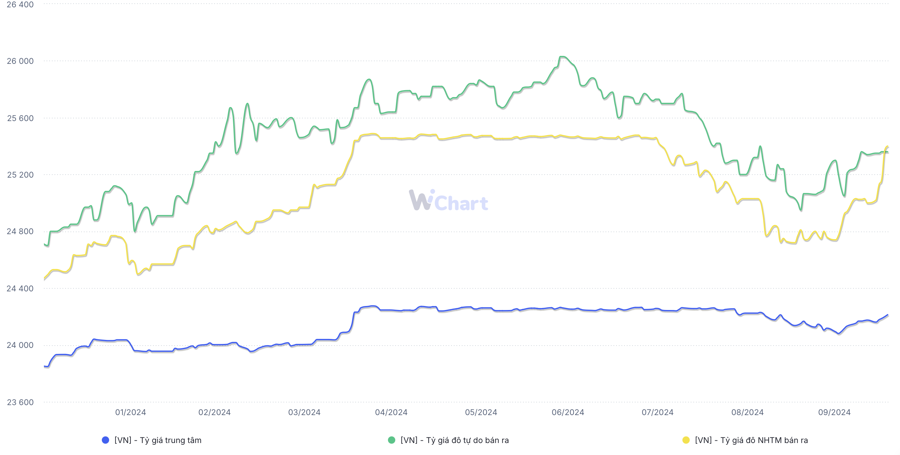
As of the close of the October 17 session (in the US), the US Dollar Index (DXY), which measures the strength of the greenback against a basket of major currencies, stood at 103.58 points.
DXY surged to its highest level in 11 weeks after data revealed that US retail sales for September exceeded expectations, bolstering the likelihood of a moderate interest rate cut by the Federal Reserve in the near future. Retail sales rose by 0.4% in September, outpacing the 0.1% increase recorded in August. Meanwhile, weekly jobless claims data highlighted the severe impact of Hurricanes Helene and Milton on the job market, although there were few indications of further deterioration.
Recent US economic data presents a mixed picture of an economy that is cooling yet remains robust as it enters a crucial period politically and economically. In less than three weeks, the country will hold its next presidential election, and the Fed will decide whether to cut interest rates further. Some Fed policymakers have recently indicated that they are considering a 0.25% reduction in the benchmark rate in November or even maintaining the current rate.
The European Central Bank announced a 25-basis-point cut in its key interest rate from 3.5% to 3.25% at its second consecutive meeting yesterday, accelerating its pace of policy easing to support a weakening economy. The ECB stated that it would continue to adjust interest rates on a meeting-by-meeting basis, depending on incoming economic data. Markets now anticipate another rate cut by the ECB at its next meeting in December, bringing the rate down to 3%.










